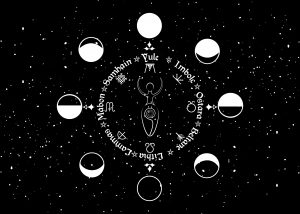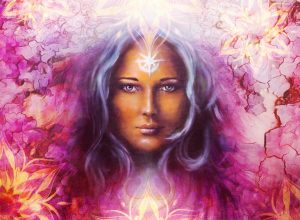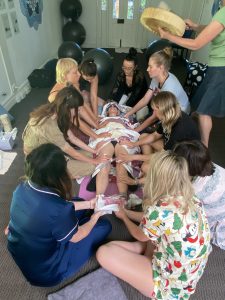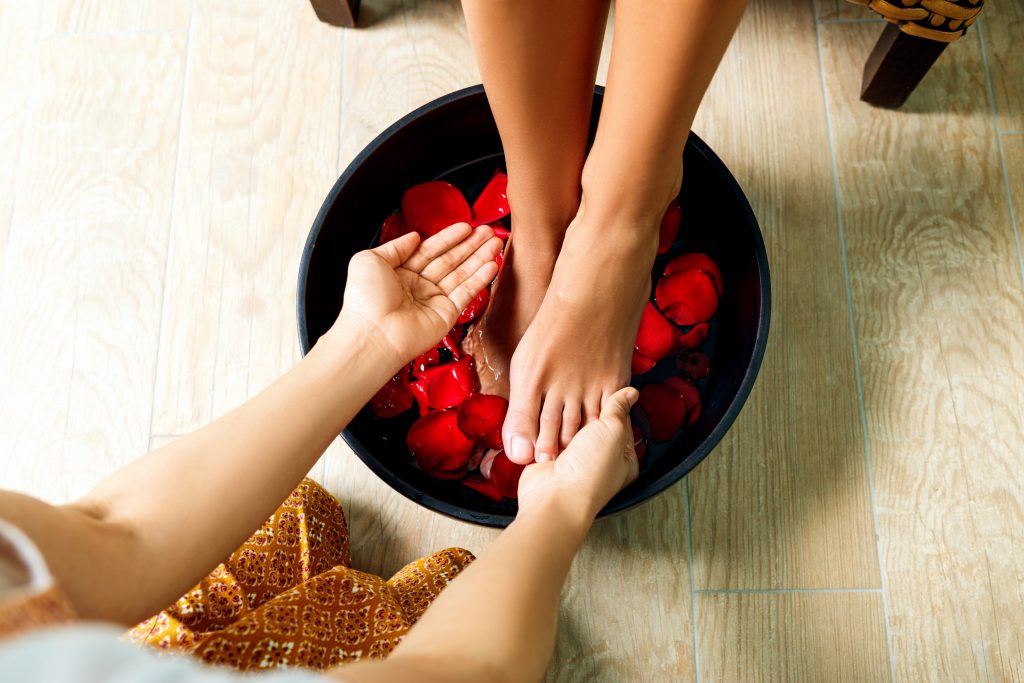Examining rituals and ceremony around pregnancy, birth and postpartum – A Remembrance and Reclamation by Jacqui Harris
It is the year 2021… You pee on a stick; you see 2 lines (or a plus sign or the word ‘pregnant’) indicating a positive result – Congratulations! But you don’t celebrate just yet. You book a Doctor’s appointment to confirm with a blood test or scan, or both. You are given your due date – the day, you are told to expect that your baby will arrive. You follow the ‘rules’ and avoid the foods and activities you shouldn’t eat and do whilst pregnant. You wait the ‘appropriate’ 12 weeks gestation to announce your exciting news to the world via social media with a beautiful photo shoot and a clever tagline and/or a “Baby *insert last name here* Due *insert due date here*”.
Maybe you are also researching and choosing your pre and post-natal care providers.
You spend the next few months waiting; waiting for each appointment to reassure, confirm and show health status and progress of your baby and pregnancy.

When it is the ‘appropriate’ time for you – you begin the planning, planning babies room, planning the gender reveal, planning the baby shower and waiting still.
Waiting for the sexing scan, waiting until ‘after 30 weeks’ for the baby shower, waiting to fill babies room, waiting for the due date, “the arrival of your baby”.
Maybe you are planning and preparing for the kind of birth you want to have.
You’ve had your sexing scan and the sonographer places your babies gender inside an envelope! You’re all ready for your gender reveal celebration. Maybe it’s a big gathering of your loved ones maybe it’s simply a well-timed social media announcement – as the balloon pops or the cake is cut or the confetti guns are fired. *EXCITING* You can now choose a theme and buy items in ‘gender specific colours’ for your baby.
It’s baby shower time! All of your (usually) female family and friends gather with arms full of gifts for baby and parents to be and spend the event eating and drinking cleverly themed spreads and playing baby shower themed games, taking turns and making predictions for the exact day/time baby will arrive and what weight/ length baby will be.
Well into the 3rd trimester it’s time for your Maternity Photo Shoot to capture you and your family, especially you – in all of your pregnancy glory. You must of course post the best pics to social media.

Your due date rolls around and there is no sign of your baby… Babies room is ready, your bags are packed for your hospital trip, the car seat is in the car, you are all ready to go. Done waiting.
You are offered an induction to help your body do the thing and deliver your baby when it was ‘supposed to’, you want this baby out now – you’re over it and so excited to meet them already – you expected it, days ago.
Your baby is Earthside!
(But it’s not official unless it’s Facebook official right?) You have that announcement outfit and name plaque ready to go for babies first (of many) social media appearances.
Last but not least in amongst the busy first week of family and friend visits and adjusting to parenthood, you have your pre-arranged Newborn Photo Shoot to capture that perfect bundle of love… For the memories, and social media too.
Does this sound like your story? It is no one’s in particular and everyone’s too, it is the year 2021 and these are the rituals and ceremonies popularly carried out in western culture to honour and celebrate pregnancy, birth and postpartum experiences.
Have you ever stopped and wondered “why?”
Why these ceremonies? Why these rituals? What are they for? Where do they come from?
In some ways they are a version of what once was… Our culture of today honours, values and pays tribute to the technological gods of medicine, social media and consumerism. What I and this article will explore are some pregnancy, birth and postpartum rituals and ceremonies we have lost or rather forgotten along the way and how we can remember and reclaim a sense of awareness moving forward in how and what/ or who we choose to honour and celebrate during our pregnancy, birth and postpartum experiences.
Pre-Conception
Let us begin at the very beginning; in ancient times women were very connected with the moon cycles and in tune with lunar energy – we ovulated with the full moon, when feminine energy is at its fullest and menstruated at the new moon, when feminine energy is at its lowest. The actual word “menstruation” comes from the Greek root word “men,” which means month, and “menus,” which means both moon and power.
Recent cultural beliefs and practices have taught us shame, disgust, pain and hinderance around menstruation but here are some ways or ‘rituals’ you can choose to remember and reclaim connection, celebration and honour of your cycles:
- Begin to track your menstrual cycle and observe how it relates to the moon cycle – simply observe how you feel during each cycle physically, mentally, emotionally, and spiritually.
- Learn how to cycle with the moon (and ditch the contraception along with all the nasty side effects, safely)
- Connect with Mother Earth; Free Bleed – ditch the overpriced, toxic, wasteful pads and tampons and opt for some comfy period underwear, reusable cotton pads, menstrual cup or better yet (if you have the time, freedom and space) nothing at all.
These simple rituals will allow you to reclaim and reconnect to yourself, your body and your cycle which leading into a conception journey will help boost your awareness when it comes to your body’s optimal fertile windows and more.

Conscious conception is a term you may or may not have heard circling around the spiritual community. Conscious conception starts with the intention to create a space of love and invite a special soul to come forward from spirit and become part of your family. Just as (“pagan”) ancestors once did you could choose to honour your conception journey by:
- Ceremonialising the act of conception
- Setting intention and communicating to your spirit baby
- Creating a birth altar
- Once you learn that you are pregnant, the altar may also be used in a ritual of thanksgiving.
Celebrating Pregnancy
As previously stated, modern western cultural ceremonies and rituals – while acted out by and held for the pregnant woman over time have evolved to instead pay tribute to the medical, material and social media gods. We shower women in gifts, Doctors words are the gospel truth and everything we do is ultimately in service to the gram.
Gender reveals did not exist prior to 2000’s but ‘Herstorically’ the concept of baby showers are thought to have originated as far back as ancient Egyptian and Roman times surrounding rituals practiced after the birth of a baby. This ceremony evolved over the ages and it was during WWII and the Baby Boom that followed which saw baby showers begin to be celebrated during pregnancy and the gifting of a personally made item for baby to lighten the expectant parents load.
Another way we can choose to traditionally honour the mother-to-be is to hold a Blessingway. A Blessingway is a traditional Navajo (Native American) ceremony, which celebrates a woman’s rite of passage into motherhood. The westernised version of this is the ‘Mother Blessing’ and to avoid cultural appropriation unless a Blessingway is being traditionally performed by a persons with traditional teachings ‘Mother Blessing’ is the preferred term to use for the ceremony.
Celebrating Birth
Birth was once women’s business, only women witnessed, only women held the wisdom, and this wisdom was passed from woman to woman, to daughters and their daughters. Witch trial activity between the 1300’s to late 1800’s saw to eradicate this women’s only business and along with it the wise woman. But she still lives. She is within me and she is within you. The medicalisation of birth to date has taught women to ignore intuition and believe the medical professional above all else but when it comes to your own labour and birth experience you are the expert in the room. The most powerful way you can choose to honour and reclaim your birth is to know and remember this!
- Awaken your inner wise-woman! Prepare for your birth (hire a doula, become a birth nerd, do a birth class/course, know and understand the process of physiological birth and how medical interventions of the 21st century can help you when and if you need it)

The practice of home birthing or free birthing is being widely debated in recent times and there is a push for women to have choice and access to non-hospitalised birthing services, just as our ancestors did in the comfort of their own living spaces with the support of community.
Indigenous cultures such as Aboriginal and Torres Strait Islander cultures practice Birthing on Country. Birthing on Country generally refers to an Aboriginal mother giving birth to her child on the lands of ancestors, ensuring a spiritual connection to the land for her baby. When a woman gives birth off country, away from ancestral homelands, the belief is that it breaks the child’s spiritual place in the community raising emotional, social and spiritual issues for the mother and child. This practice highlights the importance of allowing and providing women with choice and services for non-hospitalised birthing.
Celebrating Postnatal Period
Following the birth of your baby is the birth of your placenta, also known as the 3rd stage of labour. Modern society considers the placenta “medical waste” however in many cultures, there are many rituals honouring this life giving organ. Hospitals, unless you request otherwise will end up disposing your Placenta in medical waste, some hospitals offer you the choice to donate your placenta to medical science and research facilities but what are some other options? How can you choose to honour your placenta?
- Placentophagy – the eating or consuming of the human placenta. This ritual is commonly practiced in traditional Chinese culture. The main reason women might choose placentophagy is for its perceived medicinal purposes and in believing and consuming the placenta it is honoured as natural, sacred medicine.
- Lotus birth or umbilical cord nonseverance – UCNS -is the ritual of not cutting the umbilical cord after the birth of the baby. The cord is left intact, the placenta is generally wrapped in something breathable such as a cotton piece of fabric and kept on or near the baby until the cord dries and breaks on its own. This ritual has origins in Indigenous, African, some Russian and Indian cultures. There are various reasons why a mother might opt for a Lotus birth but the general belief is that there is a spiritual connection between the placenta and baby and in allowing this separation to occur naturally honours this bond. Once the placenta has naturally detached it is commonly buried.
- Placenta Burial – Burying rituals of the placenta are by far the most common ways in which many cultures choose to honour this sacred organ. Traditional cultures such as the Native Americans, Maori, Aboriginal, Torres Strait Islander, African Tribes, Traditional Chinese and more all practice placental burial rituals for various reasons honouring connection, mother and child.

From the 5th century to the 15th century there was a lot of focus on God rather than on the mother. The most important birth celebration that people followed was the Baptism ceremony that was celebrated a day after the baby’s birth. Strangely, a mother was not allowed to participate in the festivities as tradition prescribed that she undergo a 40-day sequestering.
Non-Christians might instead hold a naming ceremony in honour of the new baby.
Last but not least Traditional Navajo (Native American) rituals carried out postpartum honouring a mothers Rite of Passage is known as the Closing of the Bones Ceremony. Closing of the Bones is a postpartum healing ceremony created to nurture the mother after her passage through giving birth, and her journey into motherhood. It is a celebration, a setting of sacred space, and a way to nurture Mum & baby.

These are just some of the ways in which pregnancy, birth and postpartum experiences were once celebrated in ancient and traditional cultures. We can gain a remembrance and awareness from what was and Reclaim our birth rites by researching, being informed and choosing to continue some of these rituals and ceremonies on today that align with your personal journey in honour of mother and child rather than doctors, social media and consumerism.
My name is Jacqui Harris, and I am a Doula who has done extensive training with Vicki Hobbs of the Doula Training Academy. For a more in-depth explanation of how I can facilitate your euphoric birth experience contact me:
Email:
[email protected]
Facebook:
www.facebook.com/surgetosoul
Instagram:
www.instagram.com/surgetosoul
Website:
www.surgetosoul.com
References
Honey Colony Staff, (2016, July 15), 4 Ways to Honour the Power Menses, https://www.honeycolony.com/article/the-power-of-menses/
Jing, J, (2018, October 24), The Moon Cycle and the Menstural Cycle, https://cycleharmony.com/stories/menstrual-myths-a-rituals/the-moon-cycle-and-the-menstrual-cycle
GettingPregnant.com, (2020), Conscious Conception – The Power of Awareness, https://www.getting-pregnant.com/conscious-conception/
Beliefnet, (2021), Welcome Your Baby – Pagan Traditions, https://www.beliefnet.com/love-family/parenting/2000/05/welcome-your-baby-pagan-traditions.aspx
DHWTY, (2018, November 24), Ancient Childbirth Beliefs and Rituals Thought to Protect Mother and Child, https://www.ancient-origins.net/history-ancient-traditions/ancient-childbirth-rituals-0011049
Smart Mom Team, (2014), History of Baby Showers, Why They Aren’t just Parties, https://smartmom.co/history-of-baby-showers/#:~:text=%20History%20of%20Baby%20Showers%3A%20Why%20They%20Aren%E2%80%99t,baby%20boom.%20Showers%2C%20now%20held%20before…%20More%20
Dragon, N, (2019, February 10th), Birthing on Country – Improving Aboriginal and Torres Strait Islander Infant and Maternal Health, https://anmj.org.au/birthing-on-country-improving-indigenous-health/#:~:text=Birthing%20on%20Country%20generally%20refers%20to%20an%20Aboriginal,spiritual%20connection%20to%20the%20land%20for%20her%20baby.
Reza, Z, (2015, March 9th, Placenta Traditions from Around the World – Different Cultures, Different Beliefs, https://www.babygaga.com/placenta-traditions-from-around-the-world-different-cultures-different-beliefs/#:~:text=The%20practice%20of%20placentophagy%2C%20or%20eating%20one%E2%80%99s%20own,the%20placenta%20and%20why%20it%20should%20be%20consumed.
Pearson, S, (2020), Lotus Birth – A Gentle Beginning, https://www.naturalparenting.com.au/lotus-birth-a-gentle-beginning/
Meacher, T, (2021), Closing of the Bones Ceremony, https://taniameacher.co.uk/closing-of-the-bones-ceremony/#:~:text=%20What%20Is%20A%20Closing%20Of%20The%20Bones,sacred%20space%20is%20set%20up%2C%20with…%20More%20

